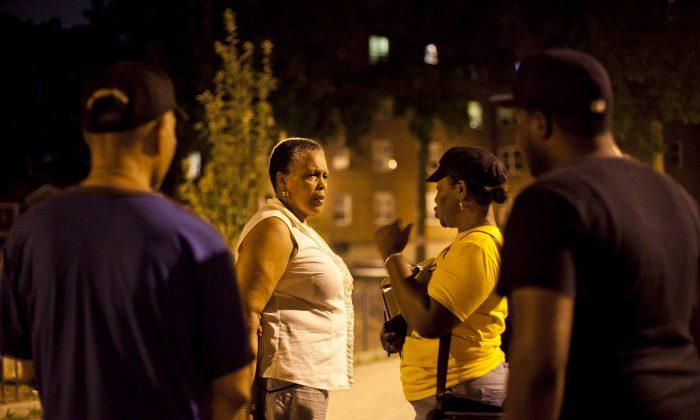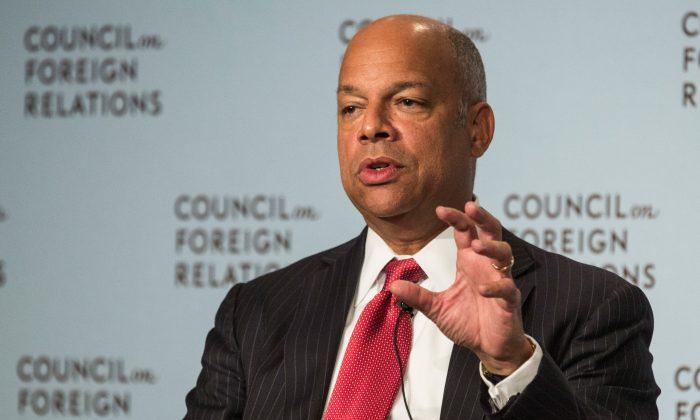NEW YORK—Active community engagement with the police has proven a key strategy for making neighborhoods safer in places like Boston, Philadelphia, and Los Angeles. How New York’s police engage with the community will also be key as the city’s police department works to mend relations with minority communities.
“Now we have a new challenge,” new NYPD Commissioner Bill Bratton said. “How to get police officers to re-engage with people who are suspicious while respecting the public’s constitutional rights.”
Bratton spoke at a forum on community safety Jan. 15 where he said the problem of stop and frisk “has been more or less solved.”
Bratton said the next step is rebuilding community trust. High numbers of stops by police in minority neighborhoods led to accusations of racial profiling and a high-profile class action lawsuit decided in August. City Council also passed laws last year intended to curb stop and frisk.
The city’s new police commissioner is a longtime advocate for collaborative policing, which involves the close cooperation of law enforcement and community members. Such collaboration requires open communication and trust.
Collaborative policing requires, “being known to the community, knowing who is in the community, who are the good people, who are the bad people, and understanding the difference in how to interact with them,” said Bratton.
Collaborative policing and shared responsibility for public safety is the key to maintaining the record low levels of crime in New York said Bratton, speaking at a symposium on public safety held by the Local Initiatives Support Corporation.
Bratton said that he and Mayor Bill de Blasio are committed to “finding the appropriate level of police interaction with our communities, with our residents, so that we can once again regain the trust that should come for a police department that has kept a city so safe for so many years.”
Brooklyn Success
The NYPD has long been closely engaged in working with community members to improve public safety.
For example, collaborative efforts between law enforcement and the Fulton Area Business Alliance (FAB) in the Fort Greene/Clinton Hill neighborhood helped change the area from a market for illicit drugs, to a more active and successful commercial district.
Phillip Kellogg, head of the FAB in Brooklyn, worked closely with the Kings County district attorney and the NYPD to cut back crime and drug trafficking.
“We’re very grateful we had the reception and engagement from law enforcement,” said Kellogg. Kellogg said he met regularly with officers and the DA’s office, both of whom greatly appreciated the valuable information the community could provide.
Kellogg said that frequent communication helped address concerns as they came up. Through collaboration with then-Council member Letitia James, the precinct installed 24/7 monitored security cameras at key sites.
The business alliance also facilitated communication between the police and a drug treatment center in the neighborhood to crack down on drug trafficking happening outside the center.
Critical to the success of the FAB was incorporating as a nonprofit Business Improvement District (BID) in 2009. As a membership BID responsible for delivering certain services to the community, the alliance saw great success.
The FAB played the essential role of bringing people together, building coalitions, and sharing information.
In 2012, the privately funded Local Initiatives Support Corporation (LISC) awarded the FAB Alliance its MetLife Foundation Community-Police Partnership Awards for FAB’s success in reducing drug dealing in the area and strengthening the community.
Philadelphia Lessons
LISC has supported similar examples of collaboration between law enforcement and community groups in other cities.
LISC sponsored a symposium Jan. 15 where representatives from law enforcement and community groups who worked together in Los Angeles and Philadelphia shared lessons learned from working together.
Philadelphia Police Department District Capt. Michael Cram and his officers worked closely with Asociación Puertorriqueños en Marcha to reduce crime at a hot spot in Eastern North Philadelphia.
Engagement through the Puerto Rican community association opened up communication between the community and local police officers and helped the department zero in on repeat offenders. The mother of one offender was even reporting on her son—such was the trust the department had established in the community.
“Neighbors take back neighborhoods,” said Cram. When communities work closely with police and are no longer afraid of their local repeat offenders, they are winning back their communities, he added.



